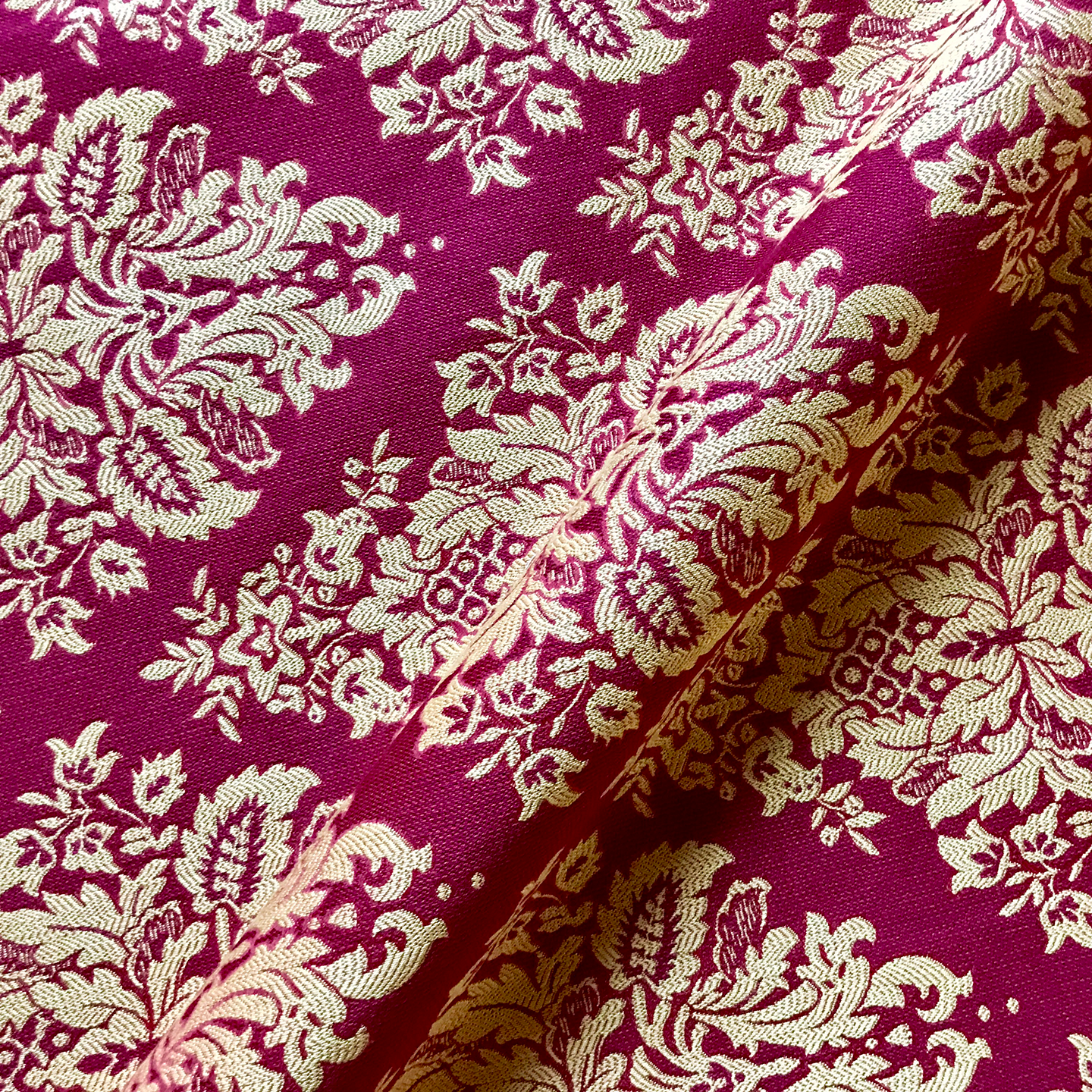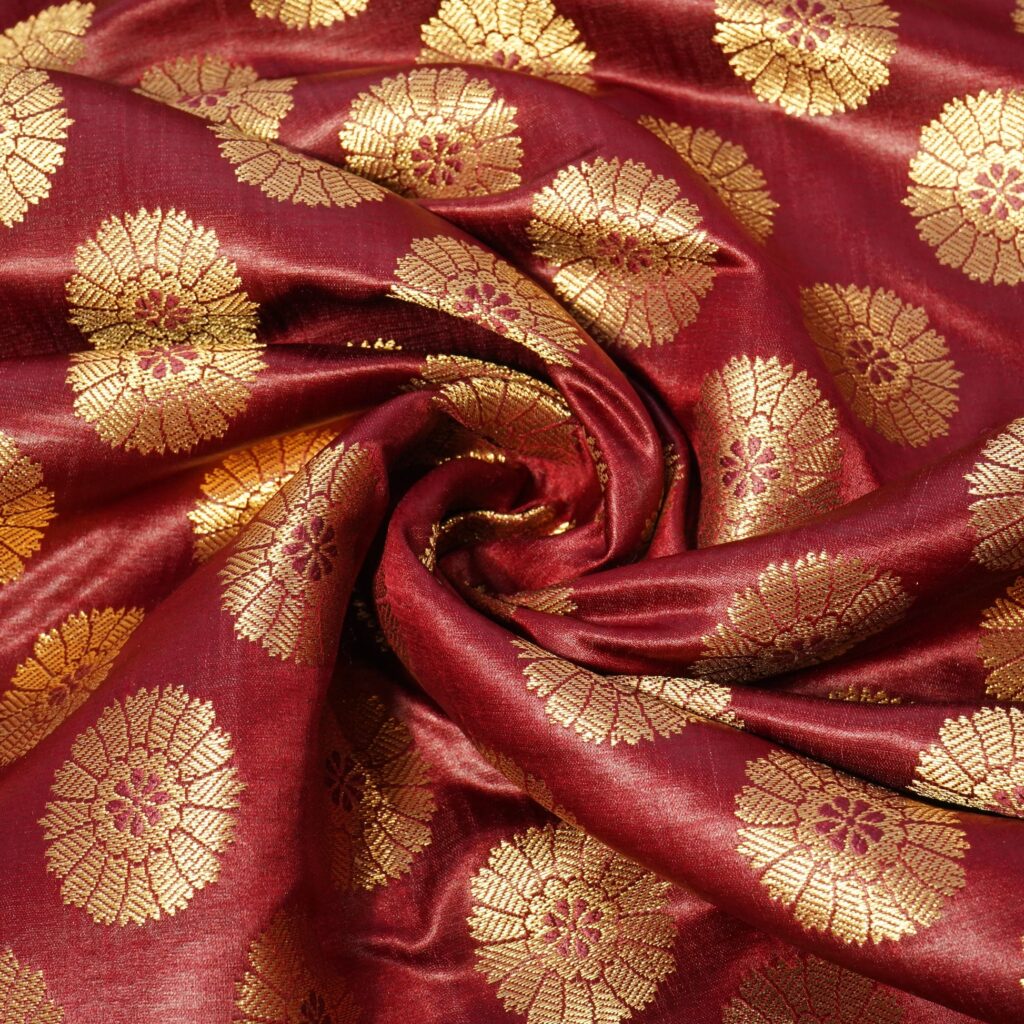Maroon Damask vs. Maroon Brocade: Can These Fabrics Be Mixed?

Introduction
Fabric compatibility is crucial in fashion and sewing, impacting the final look and durability of creations. Maroon damask and maroon brocade are both luxurious fabrics, but how well do they work together? This article explores their compatibility, offering insights into texture, care, and styling.
Compatibility Analysis
Yes, maroon damask and maroon brocade can be mixed. Both fabrics are woven with intricate patterns, lending a sophisticated touch to garments and home décor. However, their compatibility depends on several factors, including texture, weight, and care requirements.
-
Texture: Damask is generally smoother with a reversible pattern, while brocade is heavier with raised designs. Their textures can complement each other, adding depth to a piece.
-
Weight: Brocade is typically heavier than damask, which can affect the drape. Balancing these fabrics requires careful pattern selection to ensure even weight distribution.
-
Stretch: Both fabrics lack significant stretch, making them suitable for structured garments.
-
Care Requirements: Damask may require more delicate care compared to brocade, which is often more durable.
Fabric Properties Comparison Table
| Property | Maroon Damask | Maroon Brocade |
|---|---|---|
| Fiber Content | Natural (cotton, silk) | Natural/synthetic mix |
| Weight and Thickness | Medium | Heavy |
| Breathability | Moderate | Low |
| Stretch and Elasticity | Low | Low |
| Wrinkle Resistance | Moderate | High |
| Care Instructions | Gentle wash, low iron | Dry clean recommended |
| Durability | Moderate | High |
Benefits of Mixing These Fabrics
- Enhanced Texture and Visual Interest: Combining damask’s smoothness with brocade’s texture creates a rich visual tapestry.
- Improved Comfort and Performance: The mix can offer a balance of comfort and structure, suitable for both clothing and drapery.
- Better Drape and Movement: Strategic use of these fabrics can enhance the flow and silhouette of garments.
- Cost-Effectiveness: Mixing can reduce costs by using less of the more expensive fabric.
- Seasonal Versatility: Both fabrics can be used in various seasons, with brocade offering warmth and damask providing breathability.
- Design Possibilities: The combination allows for creative designs in fashion and home décor.
Potential Challenges
- Different Shrinkage Rates: Pre-washing both fabrics can help mitigate this issue.
- Conflicting Care Requirements: Opt for the more delicate care method to preserve both fabrics.
- Texture Clash or Pilling: Test swatches together to ensure compatibility.
- Seam Puckering: Use appropriate interfacing to stabilize seams.
- Color Bleeding or Fading: Wash separately before combining to avoid color transfer.
Sewing & Styling Tips
- Sewing Techniques: Use a sharp needle, such as a size 70/10 or 80/12, for precision.
- Interfacing Needs: Lightweight interfacing for damask and medium for brocade helps maintain structure.
- Seam Finishing Methods: French seams or serging can provide a clean finish.
- Pattern Selection: Choose patterns that accommodate both fabrics’ weights, like structured jackets or skirts.
- Styling Ideas: Pair with neutral tones for a balanced look or use as statement pieces in home décor.
Care & Maintenance Guide
- Washing Instructions: Hand wash damask and dry clean brocade for longevity.
- Drying Recommendations: Air dry both fabrics to prevent damage.
- Ironing and Steaming Tips: Use a low-heat setting for damask and a medium setting for brocade, with a pressing cloth.
- Stain Removal: Treat stains promptly with fabric-specific solutions.
- Long-Term Care: Store in a cool, dry place to prevent fading and deterioration.
FAQ Section
-
Can you wash maroon damask and maroon brocade together?
- It’s best to wash them separately due to different care needs.
-
Will maroon damask shrink more than maroon brocade?
- Damask is more prone to shrinkage; pre-wash to prevent issues.
-
What needle size should I use for sewing these fabrics together?
- A size 70/10 or 80/12 needle is ideal for precision.
-
Can you mix maroon damask and maroon brocade in one garment?
- Yes, they can be mixed for a rich, textured look.
-
How do you prevent seam puckering when combining these fabrics?
- Use interfacing and adjust tension settings on your sewing machine.
-
Is it okay to mix these fabrics for upholstery?
- Yes, but ensure the piece is not subject to heavy wear.
-
What’s the best way to finish seams with these fabrics?
- French seams or serging provide a professional finish.
By understanding the properties and care requirements of maroon damask and maroon brocade, you can create stunning, durable projects that showcase the best of both fabrics. Whether you’re crafting a garment or a piece of home décor, this guide provides the insights needed for a successful fabric pairing.

Leave a Reply